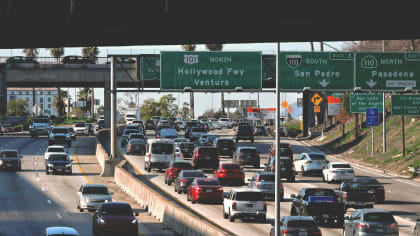WHEELS OF CHANGE
This article is from our archives and has not been updated and integrated with our "new" site yet... Even so, it's still awesome - so keep reading!
Published on Fri, Jul 2, 2010
By: The LACar Editorial Staff

(LA Car photo) WHEELS OF CHANGE: FROM ZERO TO 600 M.P.H. The Amazing Story of California and the Automobile by Kevin Nelson. Berkeley: Heyday Books, 2009. Reviewed by Brian Kennedy, PhD Kevin Nelson’s bio indicates that he is the author of eighteen books, including this one. His picture looks to make him a youthful fifty. Wheels of Change is a towering work of intellectual endeavor. None of this adds up, because this book seems like it would take almost a lifetime to research. But indeed, it is the product of one man’s incredible devotion to telling a story and doing so with multitudes of facts to support it. Starting with the turn of the 20th century and working its way up to the 1960s, Wheels of Change ties together the major figures, events, and themes that shaped car culture in the period between 1900-1960, and anchors them to their origins in California. The book has four sections, each longer than the last, starting with “The Ancient World.” In this portion, Nelson imparts the curious feeling that people had in the early days of cars and shows how they had to adjust their thinking to factor into their worldview what the car could do. This included everything from city drives to cross-country road trips, a phenomenon which the book revisits several times up to the end, when it discusses Jack Kerouac’s On The Road. Part two, “Transformation,” takes up after the San Francisco Earthquake of 1906 and carries forward until WW1, profiling such figures as Barney Oldfield as it begins to reveal the larger themes which Nelson will pursue throughout the text. These include the role of innovation in all things automotive, the place of media (mostly film at this early stage), the role of racing and its attendant dangers (lots of people die in this book, from Indy racers to James Dean), and the multiple tie-ins of California and Californians to Indianapolis. Nelson’s thesis might be summarized in these words from part three, “Birth of the Modern”: “All these new influences and trends—the speed and thrills of driving and flying, the scandal and romance of motion pictures, the promise of technology, the appeal of the modern—were coming together in booming, sun-splashed, youth-happy, oil-rich southern California” (111), and as he discusses these ideas, he invokes many familiar figures. However, few of the stories have been as succinctly well told as in his treatment. Witness, for instance, the magical and tragic story of the love affair of Clark Gable and Carole Lombard, played out against the backdrop of his Duesenberg JN and a beater Model T that she had given him. Part four, “Wheels of Change,” goes everywhere from how WW2 interrupted the growth of car culture to how smog was “discovered,” or first artificially formulated under laboratory conditions. This just a couple of blocks from Colorado Boulevard, which, ironically, Jan and Dean would later make a certain Little Old Lady famous for cruising. Within this most weighty section of the book come the stories of how hot rodding grew up from isolated “hopper-upper” clubs to a full-blown cultural force. Nelson also details the growth of racing in California from the early sportscar days to the establishment of tracks in Laguna Seca and Riverside. He talks about Champion Phil Hill and how he got his first car—at twelve!—and ends with the pursuit of land speed records by Breedlove and Thompson. The breadth of reference in this section of the book goes from the Airstream trailer to the burger joint, from the Oakland Roadster show to various of Barris’s creations. Of course, Nelson also revisits Hollywood here, talking about James Dean and Steve McQueen among others. There is far more than I’ve been able to mention, but I’ll leave it to readers to discover for themselves the richness of Nelson’s frames of reference. For the California-based car nut, this book will reinforce themes and reintroduce personalities which float through cruise-in conversations. It will also likely spark the desire to revisit some of the hallowed places of car culture, such as Bob’s Big Boy in Burbank, which get discussed as formative places in the growth of post-war automotive frenzy. For readers from afar, Nelson’s effort will start to put some concrete time and space to legends that continually turn up in magazine stories and other books. And all car-crazed readers need reminders of how some of the other seminal names in the hobby (or business, depending on your point of view)—Petersen, Parks, Offenhauser, and more—got their start and had their place in California car culture and larger automotive history. It’s not all happy. Nelson focuses on both the beautiful and the terrible when it comes to what the car has wrought in American life. Just to cite one example, he tells the story of Jimmy Murphy, the best racecar driver in the country, who died in competition. So revered was he, and so hard was it for people of his time (1920s) to understand and accept this, that Nelson says one preacher in Los Angeles “argued that Murphy’s pursuit of speed at all costs reflected a larger social sickness, one that placed haste above other, more important values” (135). The problem was, as Nelson later states it, “Automobiles, and engine of economic and social change, were changing personal morals, too . . .” (141). This carried on through time, as the hot rodders were seen as outlaws in their day, too. The same feeling works its way into Nelson’s epilogue, where he cites current highway death statistics, but because he maintains his focus on California, and particularly the Southern part of the state, there is always a backlight of sunshine behind even the most profound tale of loss told in Wheels of Change. Is there anything lacking here? Only if you wish that the book carried on from 1960, where it leaves off, to the present. I would like to see what Nelson would do with the Mustang, the import invasion, and newer iterations of car culture like drifting. His Epilogue nods toward these areas and more, but briefly. The book also includes a long list of references and an extensive bibliography of sources. Perhaps by quitting fifty years in the past, Nelson leaves the seed for a volume two? If so, I’ll add it to my library. In the meantime, you must add Wheels of Change to yours, not the least because it’s a beautifully produced and flawlessly edited book that, at $24.95 retail, delivers its cover price many times over. Available at Amazon.com




